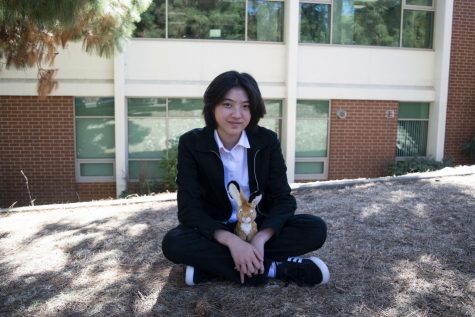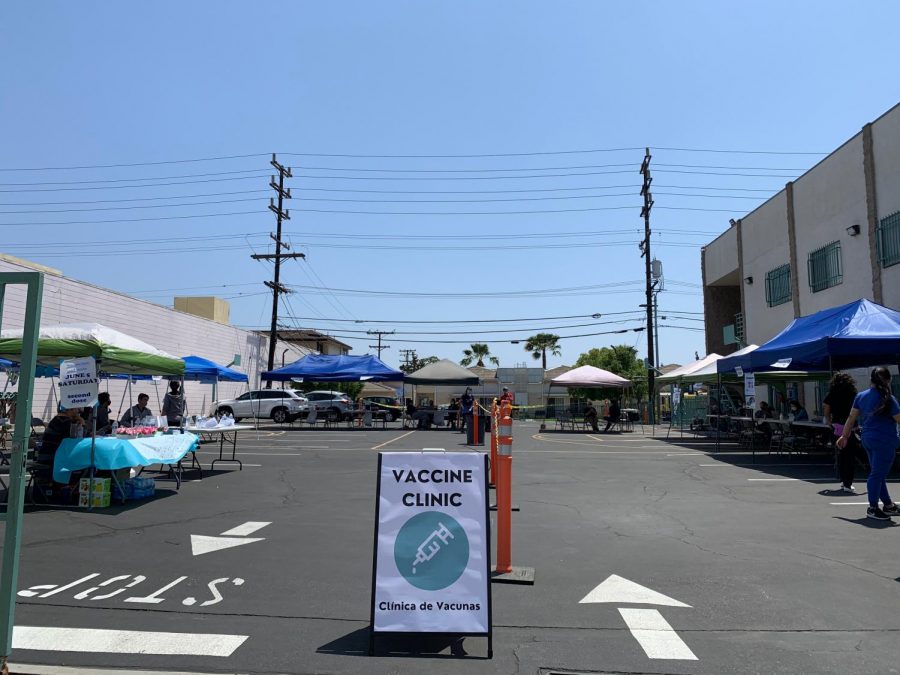LA County starts vaccine distribution
It’s been a long 10 months since the COVID-19 lockdown. As of Feb. 1, Los Angeles County has had a total 1,062,587 cases of COVID-19 and a total of 15,935 deaths.Though these are sobering statistics, there is hope: The COVID-19 vaccination rollout has begun.
Currently, there are two authorized vaccines available to Los Angeles County residents: the Pfizer-BioNTech COVID-19 vaccine and the Moderna COVID-19 vaccine. L.A. County is distributing the vaccines in systematic phases named Phase 1A, Phase 1B and Phase 1C. Phase 1A consists of any healthcare workers, including those working in hospitals, clinics, specialized centers (like oncology, dialysis, etc), mortuaries, laboratories, dental/oral health care, speech therapy, death care and more.
Phase 1A has been progressing since mid-December 2020. “I believe the vaccine will keep me safe, in addition to wearing a mask and avoiding crowded places,” said Dr. Michelle Lo, a local ER doctor. “Both vaccines have been proven to be 95 percent effective in providing immunity against COVID-19.”
Although the presence of vaccines brings hope of normalcy, Dr. Lo said that residents of L.A. County should still exercise caution. “We need to get enough people immunized so people do not get sick and [do] not overburden the healthcare system,” she explained. “Right now, our healthcare system is completely maxed out…we have to ration health care resources… As a physician who’s been trained to do whatever we can to save life, this is heart-breaking and appalling.”
As of Jan. 19, Phase 1B has started to be put in effect. Phase 1B consists of persons 65 or older and workers in education/childcare, emergency services, food/agriculture, transportation and logistics, industrial/commercial/residential/sheltering facilities and services, and critical manufacturing, as well as any incarcerated or homeless people in areas with high outbreak risk.
Dr. Siang Yang Tan, a 66-year-old pastor in Glendale, received his first dose of the Pfizer vaccine at the Pomona Fairgrounds in late January. His experience getting the vaccine was straightforward and simple.“[getting the vaccine] was easy and it took us only half an hour,” he said. “[however,] I heard that it has taken others much longer, like 3-4 hours at Dodgers Stadium.” In order to get a vaccine, those eligible can use the website https://myturn.ca.gov/ to make an appointment. The website can also test if a user is eligible for a vaccine, as well as send notifications on when vaccines are available to their specific phase.
Phase 1C consists of anyone 50-64 years old, those aged 16-49 with a health condition that increases their risk of contracting the virus, and those who are at risk of exposure in these sectors: water and wastewater, defense, energy, chemical and hazardous materials, communications and IT, financial services, and government operations / community-based essential functions. A second phase that consists of persons without any high-risk medical conditions aged 16-49 has been proposed, but at the time of this writing, there is no concrete timeline as to when this would begin.
Arame Navasardyan, a sophomore at Clark, agrees with allowing seniors and healthcare workers to be vaccinated first. “From what I have heard and seen, I believe that the plan for the vaccination rollout has been effective, as it gives priority towards the people [who] are most likely to have serious effects from catching COVID-19,” he said. “It [the vaccine] ensures that the people who are older or have previous medical conditions will have defense[s] against a potentially fatal virus.”
Unlike Navasardyan, Isabel Casem, a junior at Clark, has personally benefited from the vaccine rollout. “My family has been vaccinated due to us being a family consisting of medical workers,” she said. Casem’s mother had actually contracted COVID-19, but at the same time had also already received the first dosage of the vaccine. Although Casem’s mother experienced normal symptoms of COVID-19, “overall, it made her experience with COVID-19 more painless and [her] recovery was rapid,” said Casem. “Thanks to the vaccine, she expressed minimal issues and pain, compared to that of an average person with the illness.”

Dream destination? Shanghai, China
Interests/ hobbies? Sleeping, Reading comics, making intricate plans that never come to fruition
In...










